Field tales: Juvenile guitarfish, stray dogs and unsuccessful camera surveys
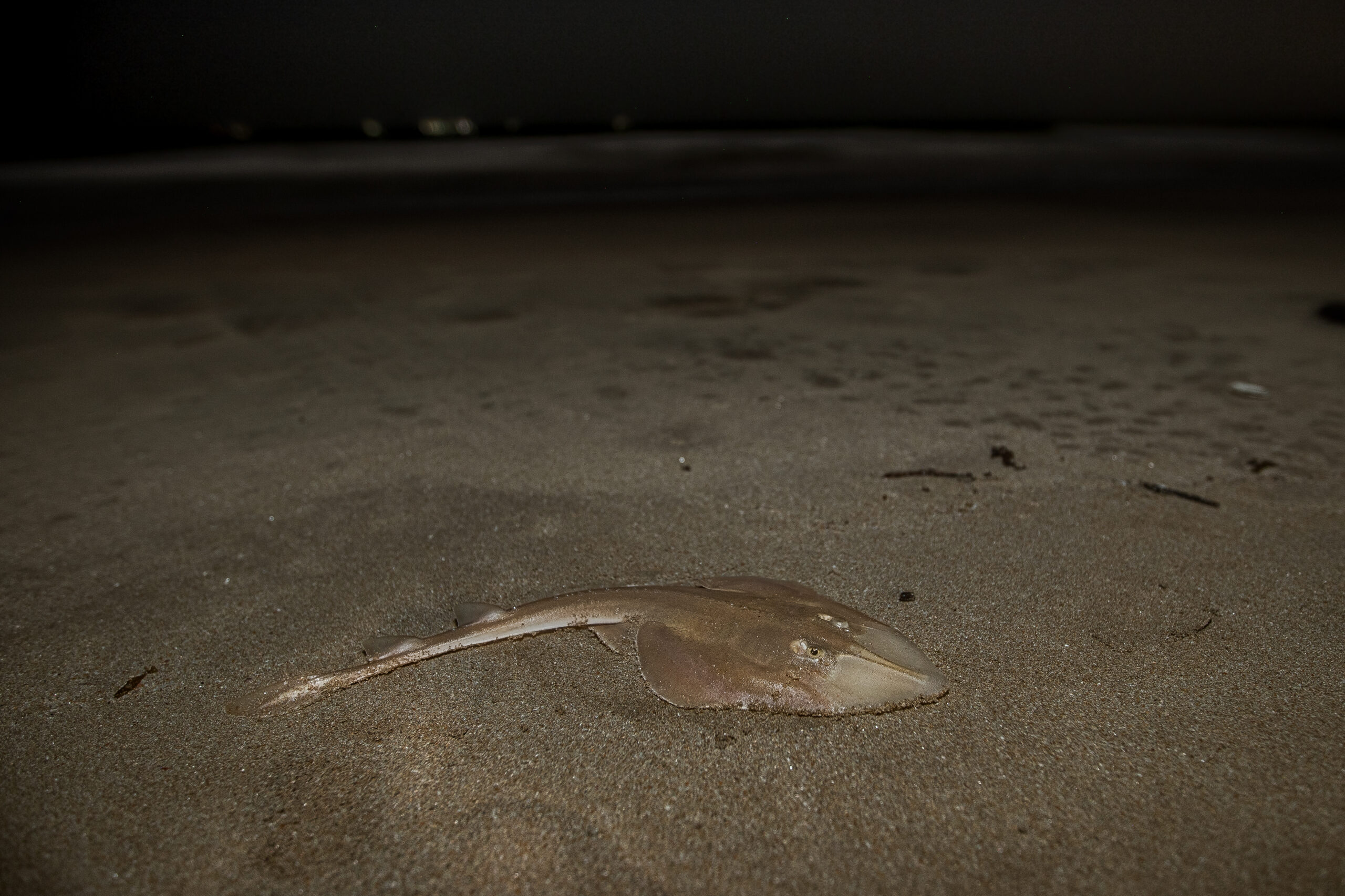
A juvenile widenose guitarfish (Glaucostegus obtusus) sampled during a post-sunset survey. Photo © Udayan Rao Pawar
Like many tourists that stroll and swim on the beaches of Goa, I too was completely unaware of the possibility of seeing guitarfish in such shallow waters until I joined this project as a Research Assistant.
Owing to the fact that they are so easy to spot along the beach, much of our work is now focused on conducting walking transect surveys to study juvenile widenose guitarfish. A typical day of fieldwork involves conducting surveys three times a day: once before sunrise, once in the afternoon and once after sunset. For these surveys we essentially walk along the beach at fixed times while counting the number of guitarfish encountered, visually getting size estimates for each individual, and taking GPS Coordinates.
Carrying out this type of fieldwork has its pros and cons. In some of Goa’s beaches, stray dogs have been a huge nuisance to us as well as to local fishers, especially early in the mornings. We have been chased by these dogs on several occasions during our surveys. On the plus side, the best part about fieldwork, especially while studying such enigmatic species, is the new and interesting aspects one gets to observe. For example, in one instance we saw around 20 juvenile guitarfish aggregated at the mouth of a creek within a span of just 10 meters. This was during high tide with a considerably strong flow of water coming out of the creek, and despite this, there were some guitarfish swimming upstream. We have also observed a difference in the behaviour of guitarfish during the day and night. During the day they are much more alert and quick to swim away with the slightest disturbance. On the contrary, they seem to be much more relaxed at night, and most individuals do not swim away until we are very close.
As researchers, speculating about these new observations and why they might be happening is always fascinating, but we evidently need many more studies to deepen our understanding.
Guitarfish seen on Galgibag beach during a pre-sunrise transect on a rainy morning. Video by Bryan Miranda
Beyond this, the other main aspects of the study are to monitor local small-scale fisheries (gill nets and shore seines) for guitarfish catch and to understand their post-capture survival rates. Many small-scale boats in this region fish only seasonally. Most fishers are currently working in the tourism sector, which is their primary livelihood from October until April. This is mainly because of low catch and better income through tourism. They do still occasionally go out fishing but primarily for self-consumption.
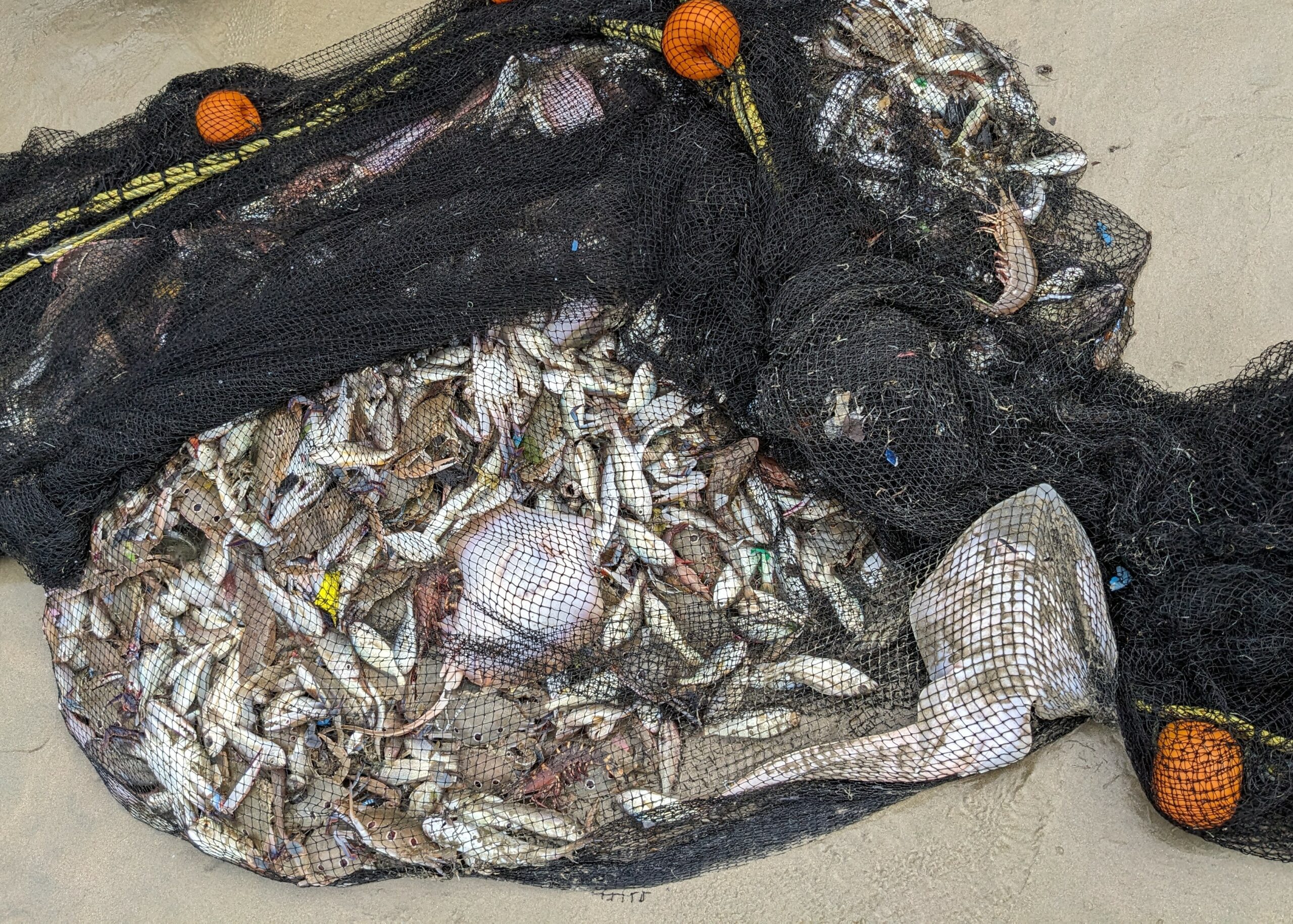
Bycatch of guitarfish in an artisanal shore seine. Photo © Avanthika Kamath.
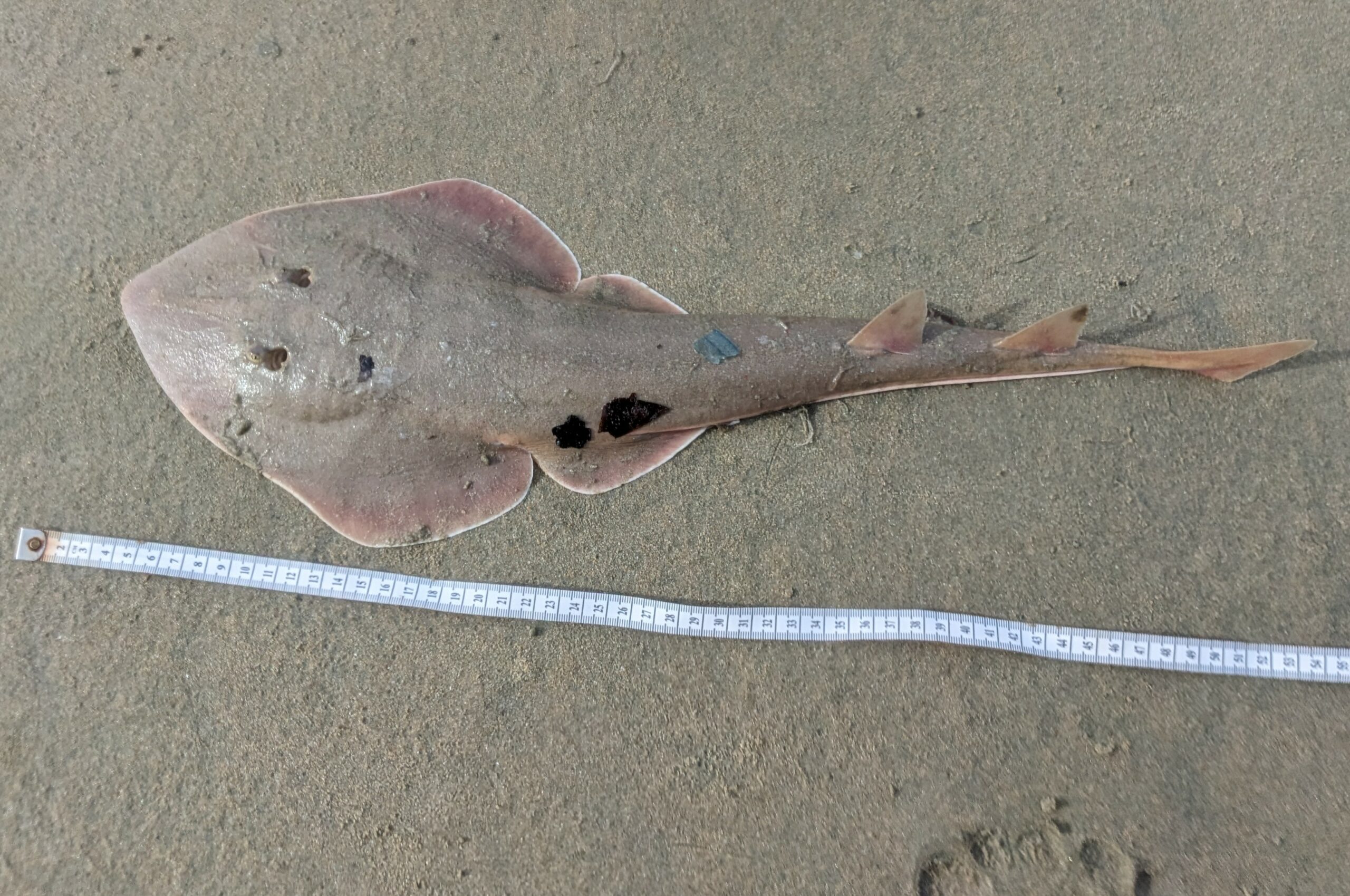
Guitarfish caught as bycatch in an artisanal shore seine. Photo © Avanthika Kamath
With the assistance of two local fishers, we have also conducted Baited Remote Underwater Video (BRUV) surveys. Cameras with baits were deployed both near the beach and in slightly deeper waters of up to 5m, although to no avail. We haven’t seen guitarfish in any of our BRUVs, which may be due to poor visibility at our study sites, but also possibly because of the kind of bait used.
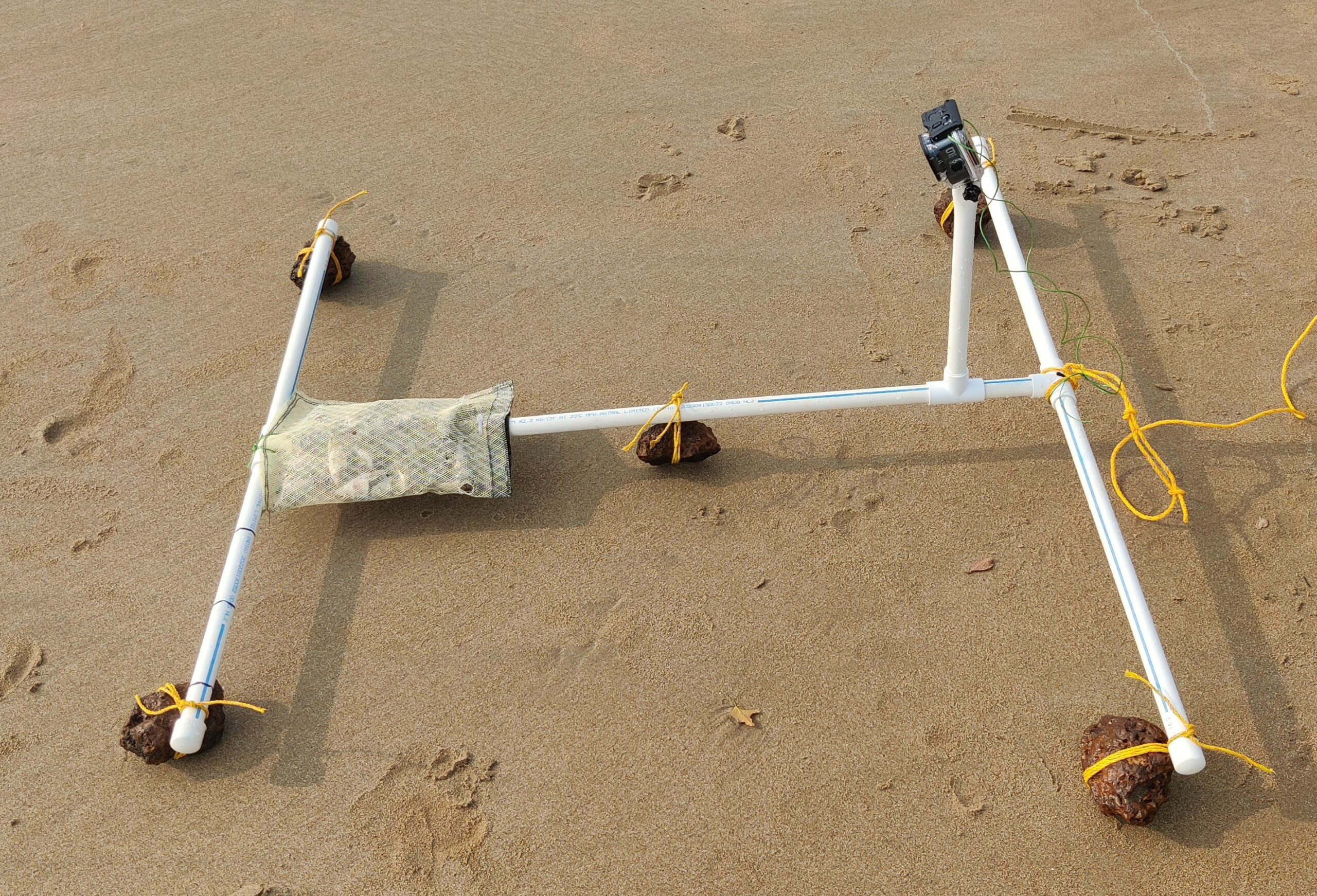
Mini-BRUVs used in our study, deployed nearshore from the beach. Photo © Bryan Miranda
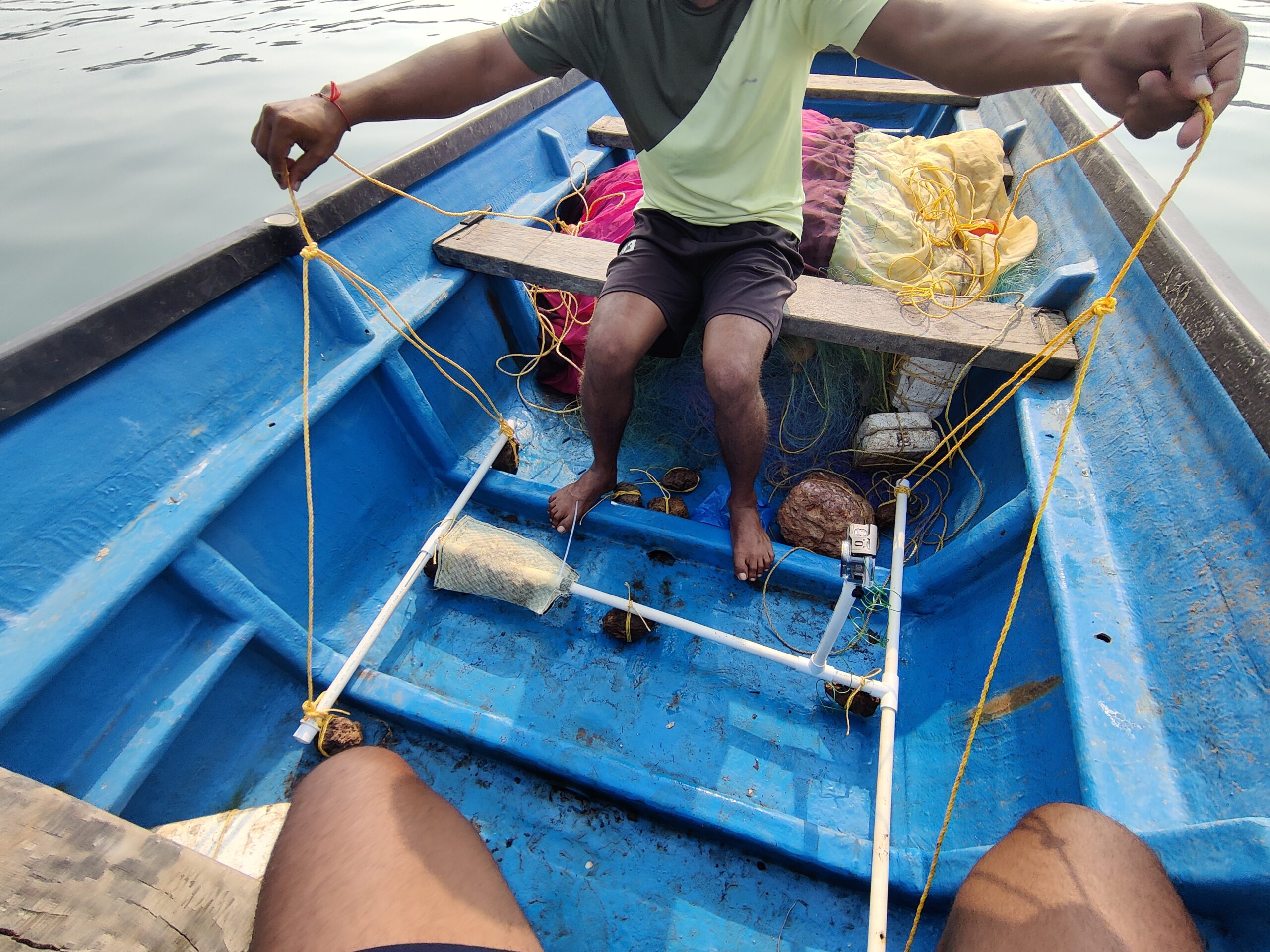
Mini-BRUVs used in our study, deployed in slightly deeper waters from a boat. Photo © Bryan Miranda.
Our initial results have given us some interesting insights into their abundance and its spatial and seasonal variation. Their numbers increased from October to December, peaked in December and have declined since then. Additionally, we have found variations in their abundance across different beaches, potentially because of differences in the level of disturbance, the beach type and the availability of food. One site – Galgibaga beach, which has also been identified as an Important Shark and Ray Area – is emerging as a nursery ground for this species, but we will need more research to confirm this,
We wish to continue this work over the long term to better understand how guitarfish use these waters, and identify where conservation efforts need to be directed for this Critically Endangered species.
